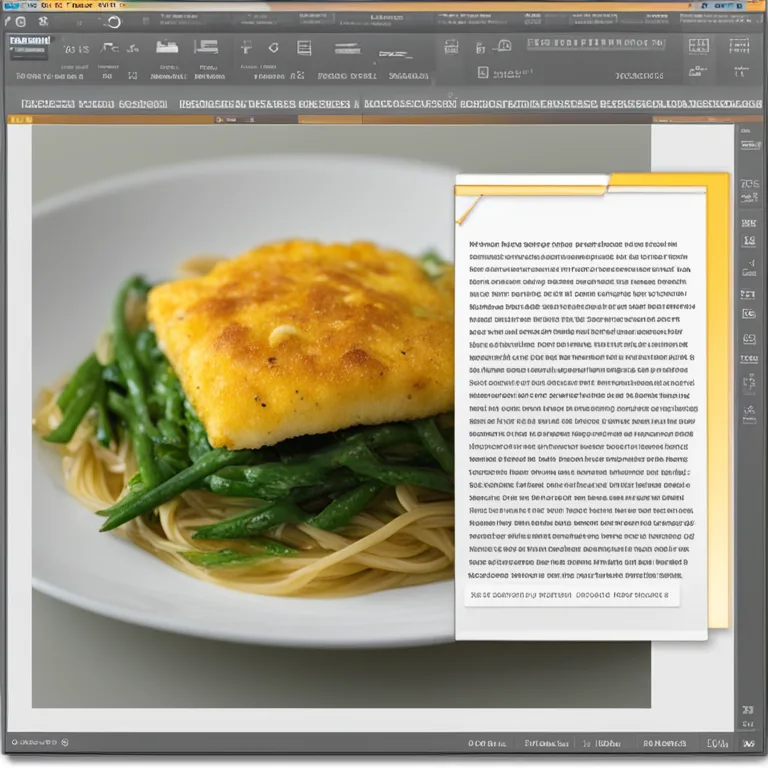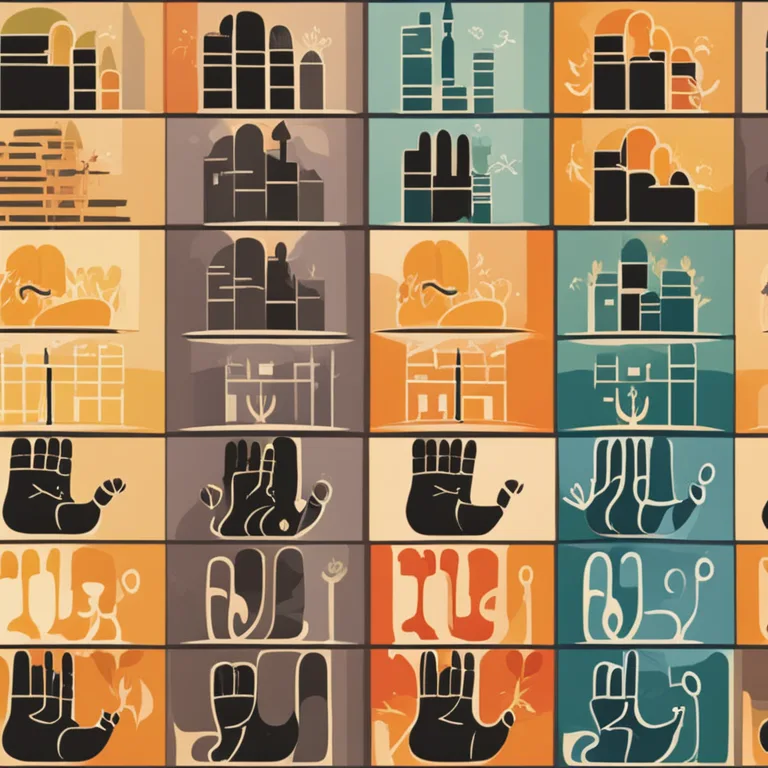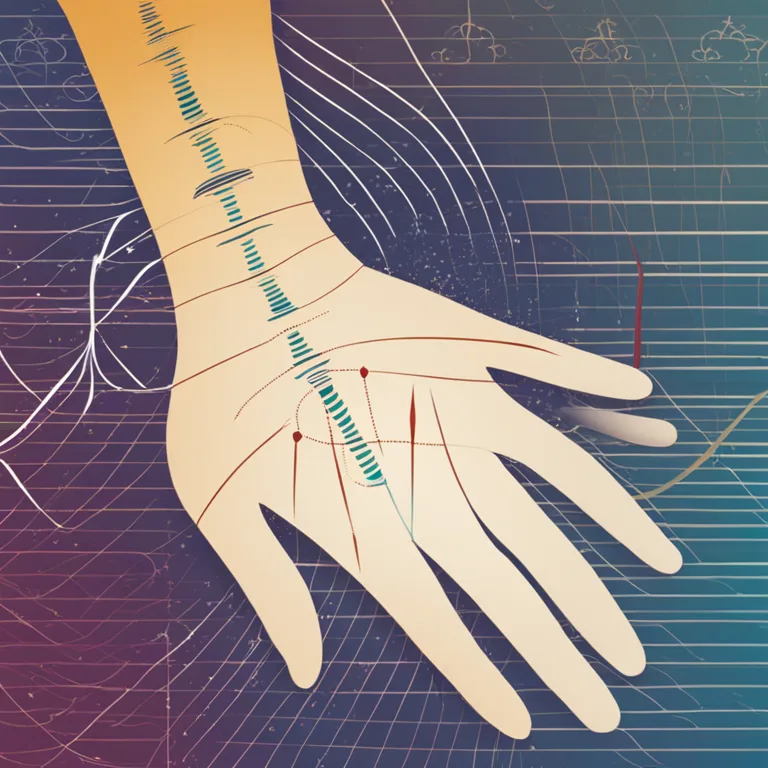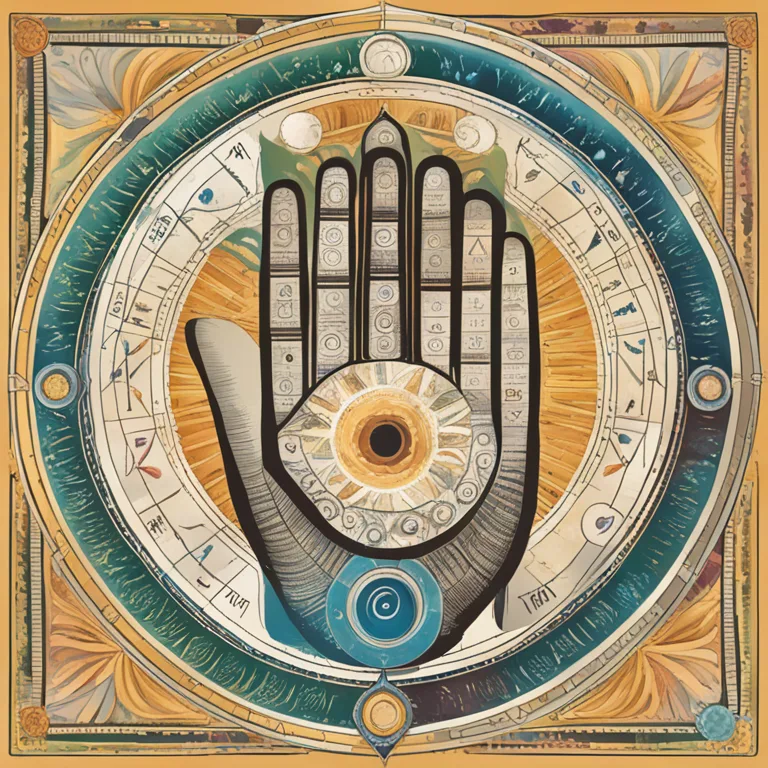
Vedic Palmistry Insights: A Guide to Your Life Lines
Discover the wisdom of Vedic palmistry and how it can reveal insights into your personality, destiny, and life path with our expert guide.
article by Nora Pennington
Introduction to Vedic Palmistry
Palmistry is an ancient art that traces its roots back to Indian astrology and Roman fortune-telling. Today, Vedic palmistry offers a unique lens through which we can view our lives and destinies. Unlike Western palmistry, Vedic palmistry is tightly interwoven with the principles of Hindu astrology, emphasizing the belief in reincarnation and karma. It provides a comprehensive look at an individual's past, present, and future, laying out a roadmap for potential life events crafted by both destiny and free will. As we delve into the world of Vedic palm reading, we embark on a journey to understand the subtle cues etched into our hands.

The Lines and their Significance
The heart of Vedic palmistry is the study of the palm's three major lines: the heart line, the head line, and the life line. The heart line is believed to reflect emotional stability, love life, and cardiac health. The head line gives insight into intellectual tendencies, decision-making styles, and wisdom. The life line, often misunderstood as a predictor of longevity, actually provides valuable insight into life changes, vitality, and significant life events. Closely examining these lines can reveal traits and forecast occurrences that align with the teachings of Vedic astrology.

Mounts and Fingers in Vedic Palmistry
A Vedic palmist also studies the mounts found at the base of each finger, named after the planets governing various aspects of life. For example, the Mount of Jupiter can indicate leadership qualities, while the Mount of Venus may speak to one’s vitality and passion. The examination is not limited to the mounts: The fingers themselves, their length, and the way they are set, can tell a story. For instance, a long Saturn finger points to a person who is disciplined and hard-working. In the Vedic tradition, each element of the hand is rich with meaning and interconnected with an individual's astrological makeup.

Influence of Hand Shape and Textures
In Vedic palmistry, the shape of the hand is categorized by the elements: earth, water, fire, and air. Each type aligns with specific personality traits. Earth hands are wide, solid, and indicative of a grounded nature. Water hands are long with oval palms and suggest creativity and emotional depth. Fire hands have a square or rectangular palm, denoting enthusiasm and leadership. Air hands feature a square-shaped palm with long fingers, revealing an intellectual and communicative person. The skin texture and color also contribute to the reading, providing clues about the person's overall constitutional health and temperament.

Timing Techniques in Vedic Palmistry
Timing is an essential aspect of Vedic palmistry; however, it's not as straightforward as one might hope. Life events are signified by markings along the lines but are interpreted in conjunction with astrological knowledge. When a palmist reads your hand, they often draw upon your Vedic astrological chart, looking at planetary periods known as Dasha systems, to correlate significant life events with the markings on your palm. This integration adds a layer of depth and accuracy to the palm reading by anchoring the interpretation in a well-established astrological framework.
The Connection to Vedic Astrology
The synchronization between Vedic palmistry and astrology is a key differentiator from its Western counterpart. Each area of the hand is associated with a different planet and zodiac sign, and the practice takes into account the nine planets of Vedic astrology. A thorough hand analysis can even reveal which planets are more dominant in an individual's life and can signal periods of ease or challenge. A complete Vedic palm reading is essentially a blend of observing the hand's physical attributes and understanding the principles of Jyotisha, or Hindu astrology, creating a unified and holistic insight into a person's life.
Charting a Path Forward
While Vedic palmistry can provide remarkable insights into one's life and potential future, it's essential to recognize its role as a guide rather than a deterministic framework. The teachings suggest that while some events in life are fated, our free will plays a significant part in shaping our journey. Thus, Vedic palmistry serves not to seal our fate, but to illuminate paths and possibilities, empowering individuals to navigate their lives with wisdom and foresight. It's a tool for self-discovery and understanding, meant to be used with mindfulness and introspection.
Published: 1/5/2024
Modified: 1/5/2024
More predictions
Come back here soon to learn more about yourself and your future


The Essence of Palmistry: A Modern Guide
Delve into the modern practice of Palmistry: understanding the lines and shapes of your hands to reveal insights about your personality and future.


The Changeable Nature of Palm Lines
Discover the factors influencing the ever-changing landscape of palm lines and what these modifications could signify in palmistry.


Hand Reading: The Essence of Palmistry
Delve into the basics of palmistry, the ancient art of hand reading, and learn how it aims to reveal personality traits and life paths.